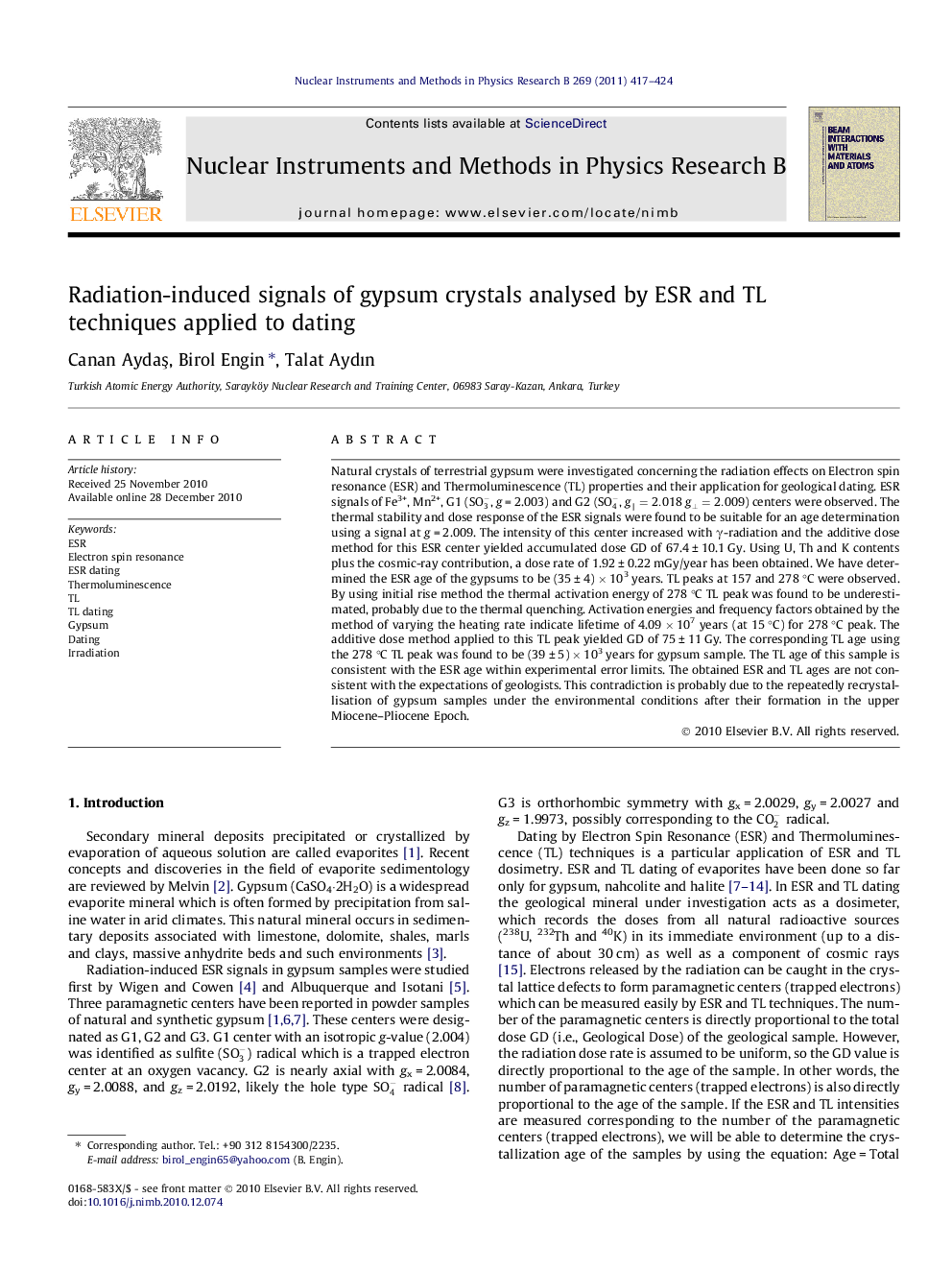| Article ID | Journal | Published Year | Pages | File Type |
|---|---|---|---|---|
| 1686532 | Nuclear Instruments and Methods in Physics Research Section B: Beam Interactions with Materials and Atoms | 2011 | 8 Pages |
Natural crystals of terrestrial gypsum were investigated concerning the radiation effects on Electron spin resonance (ESR) and Thermoluminescence (TL) properties and their application for geological dating. ESR signals of Fe3+, Mn2+, G1 (SO3-, g = 2.003) and G2 (SO4-, g∥=2.018g∥=2.018g⊥=2.009g⊥=2.009) centers were observed. The thermal stability and dose response of the ESR signals were found to be suitable for an age determination using a signal at g = 2.009. The intensity of this center increased with γ-radiation and the additive dose method for this ESR center yielded accumulated dose GD of 67.4 ± 10.1 Gy. Using U, Th and K contents plus the cosmic-ray contribution, a dose rate of 1.92 ± 0.22 mGy/year has been obtained. We have determined the ESR age of the gypsums to be (35 ± 4) × 103 years. TL peaks at 157 and 278 °C were observed. By using initial rise method the thermal activation energy of 278 °C TL peak was found to be underestimated, probably due to the thermal quenching. Activation energies and frequency factors obtained by the method of varying the heating rate indicate lifetime of 4.09 × 107 years (at 15 °C) for 278 °C peak. The additive dose method applied to this TL peak yielded GD of 75 ± 11 Gy. The corresponding TL age using the 278 °C TL peak was found to be (39 ± 5) × 103 years for gypsum sample. The TL age of this sample is consistent with the ESR age within experimental error limits. The obtained ESR and TL ages are not consistent with the expectations of geologists. This contradiction is probably due to the repeatedly recrystallisation of gypsum samples under the environmental conditions after their formation in the upper Miocene–Pliocene Epoch.
